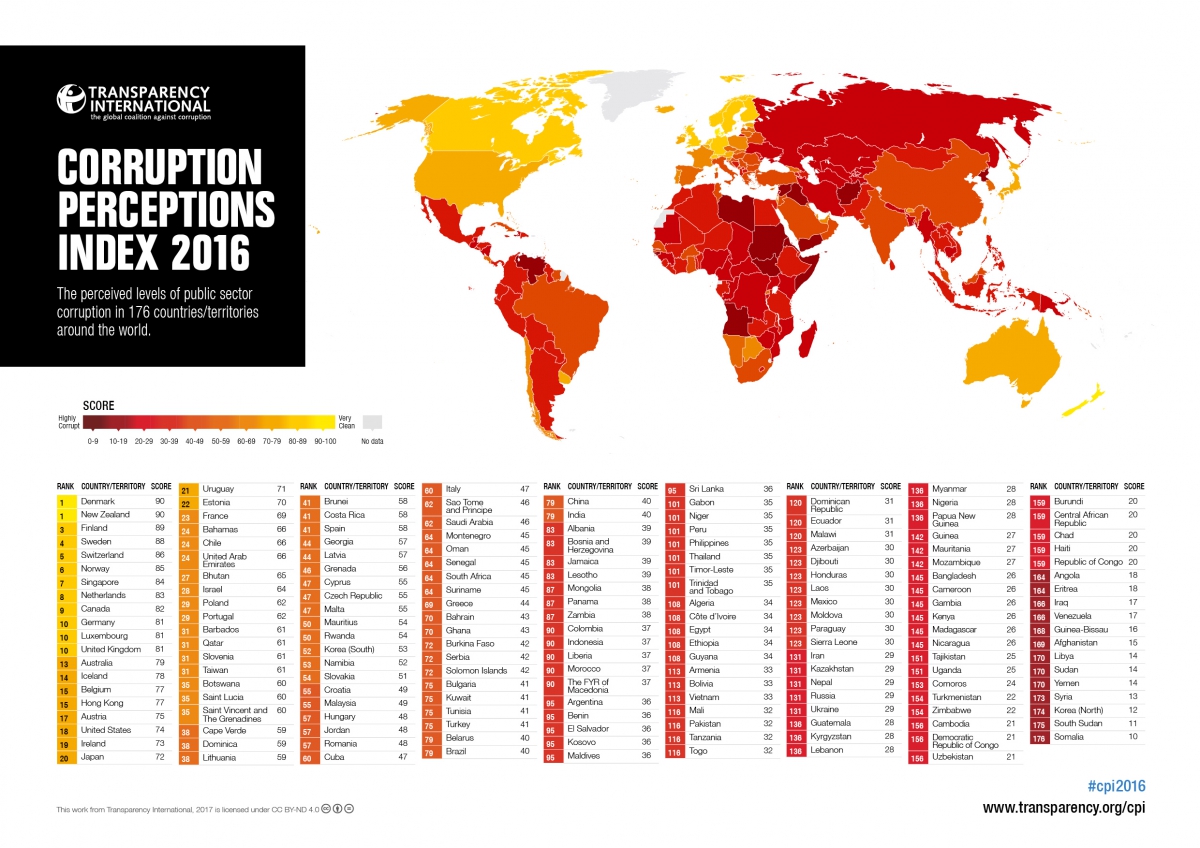Sourcing FSC Controlled Wood (or PEFC equivalent)? Corruption Perceptions Index 2016 released: find out which countries are now high risk for timber illegality
Transparency International releases its 2016 Corruption Perceptions Index (CPI) today. Find out which countries have changed as to whether they are considered high or low risk for timber illegality.
The Forest Stewardship Council’s Controlled Wood Standard (version 2) uses the annual results of Transparency International’s CPI to determine whether countries should be considered as high or low risk for timber legality.
The Programme for the Endorsement of Forest Certification (PEFC) also requires companies sourcing non certified material to use the CPI to determine the level of risk for timber legality.
The CPI is based on citizens’ perceptions of the level of corruption in their country’s public sector. It is widely regarded as a key indicator of the level of corruption in a country.
The FSC Controlled Wood system requires companies to look at four indicators to assess the risks of illegal timber harvesting, one of which is the harvesting country’s CPI score (unless there is a national risk assessment in place, which is not the case for any of the countries listed below).
- A score of 49 or below means the country shall be considered as ‘unspecified risk’ (i.e. high risk) category.
- A score of 50 or above, if combined with low risk results from the other indicators, means the country can be placed in the low risk category.
- A conclusion of ‘unspecified risk’ (i.e. high risk) means that companies that wish to source timber from that country need to carry out further verification measures to assure themselves that the timber was harvested, transported and traded legally.

Here is how the 2016 Index differs from the previous year’s, in terms of the key countries that have moved across the 49/50 boundary:
Country CPI score in 2015 CPI score in 2016 Conclusion
Malaysia 50 49 Moved to high risk category
Hungary 51 48 Moved to high risk category
Croatia 51 49 Moved to high risk category
In addition, Bahrain, Saudi Arabia and Jordan also moved from a score of 50 or above to a score of 49 or below.
No countries that were considered high risk for timber illegality in 2015 are now considered low risk.
Six countries that were considered low risk for timber illegality in 2015 are now considered high risk, of which Malaysia, Hungary and Croatia will be of the most interest to timber companies. Any company that sources Controlled Wood timber from one of these countries will need to carry out further due diligence to assure themselves of its legality.
FSC is in the process of phasing in the new version of the Controlled Wood Standard (FSC-STD-40-005 V3-0) as well as a new system for evaluating risk of sourcing wood from illegal sources. When the new standard and related risk evaluation has been brought in, the CPI will play a less pronounced role in the system. FSC and NEPCon are currently finalising risk assessments for 62 timber-producing countries that shall be used for FSC Controlled Wood certified companies when finalised.



